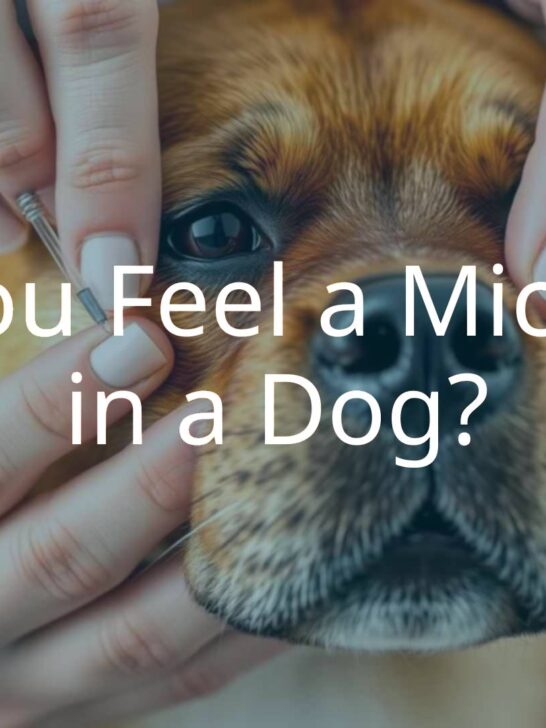German Shepherd Hip Dysplasia: What Is It, How to Treat It, & How To Prevent It
German Shepherds are known for being very loving, loyal, affectionate and protective of “their” people. These are just a few of the reasons why people love this dog breed so much.
But sometimes caring for a German Shepherd dog can mean facing some tough medical realities. The truth is, GSDs are prone to certain genetic, or heritable, health conditions.
These are health issues that can be passed on from parent dogs to little puppies. Hip dysplasia is one of the most worrisome of these health issues for German Shepherds because it can cause your dog a lot of pain, and can cost you a lot of money!
In this article, we do a deep dive into the world of canine hip issues to explore German Shepherd hip dysplasia. What is hip dysplasia? How do you diagnose it? Is there a treatment? Can hip dysplasia in German Shepherds be prevented? Let’s find out!

German Shepherd Hip Dysplasia: What Is It?
The simplest explanation for hip dysplasia is that the ball and socket of the hip don’t form and work properly.
If you are not familiar with canine anatomy (and most dog owners are not), the canine hip has two main parts:
1. The “ball” at the top of the femur, the largest leg bone.
2. The “socket” in the hip bone where it connects with the ball.
Of course there are a lot of other moving parts that are required to make a hip joint work the way it should, including ligaments, muscles, blood vessels, and more.
But hip dysplasia specifically concerns the “ball” and “socket” parts. When the socket doesn’t form properly into a cup or circle shape, the ball of the femur can’t fit into it the way it should.
If you would like to see this explanation visually, the Vet Depot offers an excellent infographic you can take a look at.
This causes all kinds of problems, which we will discuss in the next section.
Just so you are aware, there is a related condition that German Shepherds can also inherit from their parents. This condition is called elbow dysplasia.
So you may be wondering, “do German Shepherd dogs have elbows?” The “elbow” that is being referred to here is actually the shoulder joint – so where the femur of the front leg meets the socket of the shoulder girdle.
We won’t discuss elbow dysplasia further here, but it is worth knowing the problem exists, and most of the information you are about to read applies to elbow dysplasia as well.
German Shepherd Hip Dysplasia: Can It Be Prevented?
There is only one surefire way to prevent German Shepherd hip dysplasia, and that is careful breeding.
Reputable breeders that participate in the OFA CHIC database post results of their breeding tests.
This not only verifies their parent dogs are free from genetic hip dysplasia but ensures healthier puppies in future generations.
Always ask your breeder to show you proof that these tests have been done.
There are also some ways to potentially minimize how severe a dog’s hip dysplasia may become, including feeding it the right food, adding supplements, and keeping your dog at a healthy weight for each stage of life.
Because every case of hip dysplasia is as unique as every canine patient, always talk with your dog’s veterinarian about what the right approach is for your German Shepherd dog.
German Shepherd Hip Dysplasia: What Are the Warning Signs & Symptoms?
As the Orthopedic Foundation for Animals (OFA) Canine Health Information Center (CHIC) database explains, German Shepherd hip dysplasia is heritable, which means it is present in a GSD puppy’s DNA right from birth.
However, GSD puppies will typically not show any visible symptoms of hip dysplasia since they are so little.
Unlike smaller breed dogs, the German Shepherd can take anywhere from 18 to 36 months to finish growing. While your dog is still growing, the bone plates will still be soft and the hip bone and femur will still be growing and forming.
As the hip bone grows and grows, the socket will start to form irregularly. This is the point where you may start to notice symptoms.
The most important thing to remember about hip dysplasia in German Shepherd dogs is that it can happen in just one hip socket or it can occur in both hip sockets.
This can also make it harder to know what you are looking at, because if it happens in both hip sockets you may think it is something else, like back problems or spinal damage.
As PetMD explains, there are several major symptoms that can indicate your German Shepherd may be developing hip dysplasia.
Here are the major symptoms to watch for in your GSD:
- Persistent overall lameness or stiffness while walking.
- Difficulty getting up or sitting down.
- “Bunny hop” movements seem to favor one side or the other.
- Lameness that seems to favor one or both hips.
- Pain or sensitivity near the hindquarters.
- Resistance to climbing stairs or ramps.
These are especially important signs to watch for if your GSD previously had no problems with these activities and even enjoyed them. Please also keep in mind that your dog won’t know what is happening either, and will certainly be stressed about their discomfort!
So what can you do if you suspect hip dysplasia in your German Shepherd? Is there something that can be done to accurately diagnose the condition? Yes, there is a way to know for sure that your GSD has hip dysplasia, which we will talk about next.
German Shepherd Hip Dysplasia: How Is It Diagnosed?
VCA Animal Hospitals explains that sometimes hip dysplasia may be present in a GSD even though the dog isn’t showing any symptoms. This doesn’t mean that symptoms will never present themselves, but it could indicate that your dog has a milder case.
The first step in making a firm diagnosis is always going to be taking your dog in to see your canine veterinarian.
There are some situations where you may want to take your GSD in even if you don’t see any symptoms of hip dysplasia yet.
If you have adopted a rescue GSD, or if you have purchased a puppy and the breeder didn’t provide any health history or proof of testing for the parent dogs, you will want to see your veterinarian right away.
They will be able to perform diagnostic testing for various health issues in order to best prepare you for any future risks.
The gold standard for hip dysplasia diagnosis is X-rays of the hip area. This requires that your dog be put under general anesthesia.
Sometimes veterinarians can also diagnose the condition by palpation (feeling and manipulating) the hip joint area, but a radiograph (X-ray) will still be needed to confirm the diagnosis.
Taking the proper steps to obtain a firm diagnosis is especially important if you have pet insurance and you plan to apply for reimbursement for the costs of treatment or surgery to correct hip dysplasia.
Speaking of treatment, what options do you have? Can anything be done to help ease your dog’s pain? The good news is that there are lots of possible treatments, which we will talk about next.
Is Hip Dysplasia In German Shepherds Treatable?
German Shepherd Hip dysplasia is definitely treatable. In fact, there are several different levels of treatment that may be appropriate for different degrees of severity.
You may also find that your veterinarian recommends different types of treatments as your puppy grows up and begins to develop certain symptoms.
This helpful short video from VetVid shares more about the different types of treatment a veterinarian may prescribe for different stages of hip dysplasia.
Stage 1: treating for pain and discomfort
In many ways, hip dysplasia is actually a type of canine arthritis. As such, it often causes pain and inflammation that is quite similar to arthritis.
In this stage, where there is some discomfort but it is fairly mild, your veterinarian may opt for symptoms management only.
Canine NSAIDs (non-steroidal anti-inflammatory drugs) can be helpful to lessen inflammation and ease pain.
Veterinarians today often recommend health supplements such as glucosamine and chondroitin as well as other pain medications.
Stage 2: Adding physical therapy and weight management
When the hip dysplasia doesn’t yet warrant surgery but does interfere with your GSD’s quality of life, your veterinarian may prescribe physical therapy along with weight management as needed.
The simple fact is, when your dog is overweight, this puts more pressure on the hip joints.
Also, physical therapy can help your dog strengthen key muscle groups and learn how to “workaround” the hip abnormality.
Stage 3: Surgical intervention
When medication, weight loss, and physical therapy still don’t completely ease your dog’s discomfort, it may be time for surgery.
Total hip replacement is generally recommended, although as you saw about in the video above, there are additional options you may want to discuss with your veterinarian.
Recommended reading:
- The Ultimate Guide To German Shepherd Eye Boogers
- 7 Fun Ways To Supercharge Your German Shepherd’s Daily Routine





















